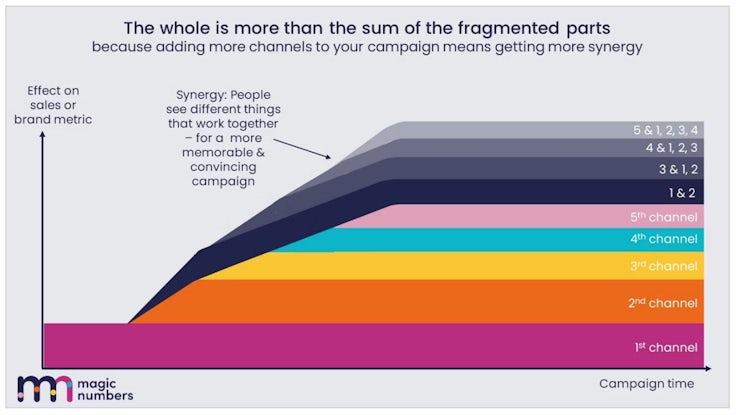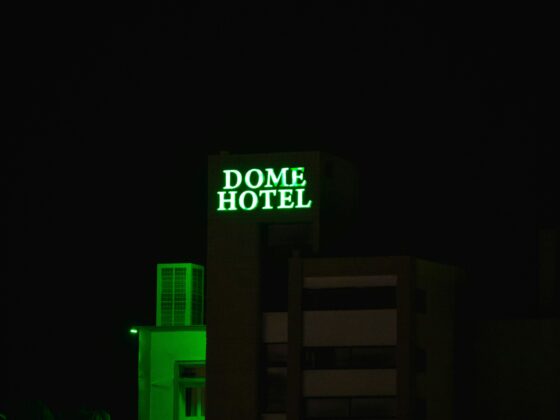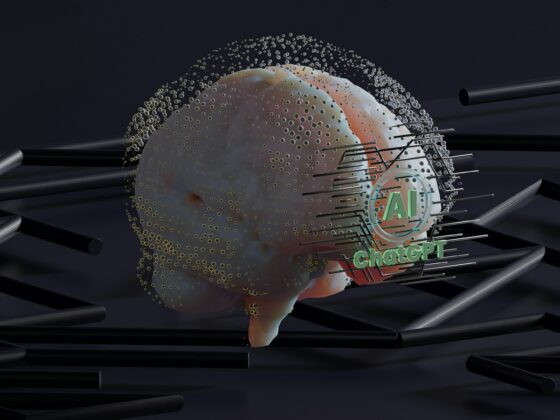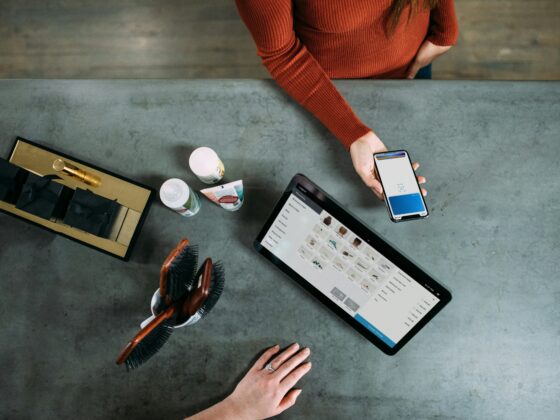Brands today have to balance competing needs: more digital content to drive engagement, but also more consistency to drive long-term effectiveness.
Marketers today face a dilemma. They’re caught between two apparently conflicting demands: what the evidence says their brands need to thrive versus what platforms such as Meta, Google and TikTok tell them they need. Consistency and repetition or a continual stream of fresh content.
We now have a tonne of evidence for how effective brand-building communication works, which is essentially via the frequent repetition of consistently distinctive creative. But in apparent opposition to that, the platforms demand brands make a vast quantity of fresh, varied content to keep their audiences glued to their screens.
The backdrop to all this is the media fragmentation that’s been happening for decades. WARC lists hundreds of articles on it. Magic Numbers founder Grace Kite recently moved the topic on when she wrote about the future of brand building consisting of “lots of littles”, and about the importance of collecting up and co-ordinating them to create valuable synergies: “Data shows effectiveness builds as more channels and touchpoints are layered in but brands and their agencies need to ensure everything is served up in a co-ordinated way.”
The media multiplier effect is a long-established principle and this is a great modern take on it. But you can only benefit from the full potential of this effect if everything’s working collectively, which doesn’t just mean having a well-orchestrated media plan, it’s about what you fill it with too.
 You need to be conscious of the limited, more fleeting attention many of these channels and ad formats usually get (as Karen Nelson-Field’s work warns), which could limit their ability to create or refresh the longer-lasting brand memories that can influence future sales. Attention measurement company Lumen recently introduced the concept of ‘aggregated attention’, which means thinking about the total amount of attention your campaigns are achieving.
You need to be conscious of the limited, more fleeting attention many of these channels and ad formats usually get (as Karen Nelson-Field’s work warns), which could limit their ability to create or refresh the longer-lasting brand memories that can influence future sales. Attention measurement company Lumen recently introduced the concept of ‘aggregated attention’, which means thinking about the total amount of attention your campaigns are achieving.
And using a larger number of channels, platforms and formats gives you a problem when it comes to the creative you need, given that the standard view on advertising effectiveness is that ideally you’d make a small number of big things and run them repeatedly for a long time.
System1’s latest analysis provides even more evidence for the value of creative consistency, and will become a go-to resource for anyone trying to persuade a client or agency to stick not twist.
Need for more content
But in stark contrast to this, many of the practical, real-world forces on the ground are pushing brands into making thousands or even millions of potentially inconsistent pieces of creative content, across and within all the platforms they’re using. The platforms tell brands, agencies and creators that their content ‘fatigues’ very quickly, often in a matter of days, and that you need to keep producing more and more of it to feed their algorithms’ and audiences’ desire for fresh new stuff.
This may explain why there’s a never-ending debate in marketing today that goes round and round and doesn’t seem to make any sense: effectiveness people saying advertising wear-out doesn’t exist, the platforms saying ad fatigue is endemic.
So what we have now is not just a media fragmentation problem, but also a creative fragmentation problem. But search for that on WARC and you currently get zero results.
A common solution to this is for brands to create a small number of hero assets and some cut-downs to run in digital and social channels. It’s a pragmatic compromise but it means actively choosing to make things that won’t work as well on an individual basis as they would if they were made from scratch from a platform-first perspective.
Whenever I hear the phrase ‘cut-downs for social’ now, I have to bite my tongue as it means creating things that probably won’t do the job they’re being asked to do as well as more bespoke creative. They probably won’t get you anything more than a fleeting bit of attention to top up brand salience, which may be fine if that’s your objective, although it usually isn’t. And creating a small handful of cut-downs often won’t even provide the volume of assets the platforms say are needed to avoid ad fatigue in any case.
It’s an OK solution if the vast majority of your spend lies in TV, but it’s less OK as you start to spend a larger proportion of your media budget in non-TV channels. And it’s even more of a problem when a majority of your media budget is going behind assets that were not originally made for the platforms they’re ending up in.
So what we’re seeing is brands starting to flip the established hierarchy in their media plan, and ending the assumption that TV is the de facto lead channel and that whoever makes it is their lead agency.
This raises a load of questions. What should you consider to be your lead channel or lead executions in a campaign: TV, video, vertical video, maybe even TikTok? Where will the core brand or campaign idea come from? Who should be briefed to come up with it? Who should be seen as the lead agency today? Maybe the lead channel is just the best channel for the job and will shift every time? Maybe the lead execution is whatever people will remember seeing, not just the most costly thing? How do you stop a bun fight breaking out amongst your agencies with every brief? Maybe the whole concept of ‘lead’ anything ceases to be meaningful?
But back to effectiveness in this lots-of-littles world. Research from the platforms tends to say that ads ‘work’ best (both for immediate and longer-lasting effects) when made bespoke for each platform. I laid out the effectiveness case for platform-first creative at Cannes, and in more depth at the IPA EffWorks Global event (watch it here). Ads naturally work best to build your brand when they’re designed for the platform in mind; they work less well when you use the same assets in every platform; and they work even less well when they’re completely disconnected.
In some channels, there’s a penalty to pay if you make poor-quality ads, including ads that aren’t fit for platform – it will literally cost you more to run them. So the algorithms have an impact on paid creative, not just organic content. Meta (and it’s similar for other platforms) says its ad auction takes into account ‘user value’, which combines user attention (view time), engagement (eg comments, shares), and creative quality (eg requests to block). Advertisers with the ‘best’ ads get the best rates, with the more interesting ads attracting the lowest CPMs – more impressions for less cost.
In terms of ad quantity, Meta says its algorithms don’t directly incentivise making fresh creative, but that fresher ads do tend to get the best results. The company says there’s an average 60% drop in conversion after four exposures for ‘performance’ ads. It also finds that more diverse creative drives better short-term results, which includes more messages, different creators and a wider range of ad formats. Meta has found that campaigns with diverse creative can achieve 32% lower CPAs and 9% greater incremental reach versus the average. Its ad delivery system likes more diverse creative as it allows it to find new audiences more easily (hence the uplift in incremental reach). Meta recently found that using 20 or more executions in a campaign drives significant performance improvements (-29% incremental CPA compared with fewer than 20 executions).
But even in this heavily performance-driven, content-hungry environment, the platforms still recommend that ads are distinctively branded, ie come from a recognisable brand at a glance.
So there’s a new reality at play here that many brands and agencies have been slow to understand and accept: audiences aren’t the only audience now; fitting the platforms perfectly and also appealing to their algorithms are important factors in success. Like it or not, some of the creative work we run today needs to be made for both people and algorithms in order to ‘work’. And this is before we start thinking about the new third audience: the LLMs.
Some agencies prove resistant, still arguing for fewer, bigger things, which then don’t meet the needs of the platforms. And some brand teams literally cannot meet the demand they face – their inhouse studios are too small or overworked to cope with the quantity needed, and can end up missing deadlines for new promotional campaigns and activations. This is where GenAI creative and production tools like Jellyfish and Brandtech’s PencilPro can step in – allowing overstretched marketing teams to easily and quickly create the variants the platforms need.
According to Realeyes, the attention testing company, the Starburst brand team at Mars recently created 87 creative versions of an ad in one day and asked it to instantly figure out which would drive the best results. But it turns out 87 variants is nothing. A global cosmetics company recently asked Realeyes to measure millions of creative assets. The only way to create so many assets is with AI, and AI is the only way to evaluate them. Synthetic creative development needs synthetic measurement.
But we’re still in the foothills of all this, and in fact a major practical challenge is that a big proportion of the assets created aren’t fit for platform in very basic ways, with branding, aspect ratios, subtitling and messaging wrong, and so on. Again, AI is helping brands here. CreativeX, which uses AI to assess creative content at scale, says that 50% of digital ad spend is put behind ads that don’t get the basics right and this is wasting billions of ad spend a year. The company says 35% of media spend goes behind digital ads with no visible branding in the first few seconds and 32% of ads are an unsuitable length, often because TV ads are being poorly recycled for digital video.
Aiming high
One solution (that may not be right for every brand of course) is to aim for the best of all worlds: high consistency, high volume, high fit for platform.
High consistency
You need clearly defined brand codes, religiously adhered to, but with brand guidelines that can flex so that executions can speak the brand’s language whilst using the syntax and grammar of the platforms.
High volume
You need the people, agencies and tech to generate the volume of fresh, original content required. But also a singular, focused strategic idea with the longevity and flexibility to be executed in fresh, native ways and a breadth of potential messages to play with.
High fitness
You need creative people (probably including creators) who are extremely online and really understand the language of the platforms they’re creating for. But you need to get them working from one core strategic idea. This is a tricky balancing act and needs some sensitive community policing – or you won’t get what you need from your creators.
This kind of approach will allow a brand to benefit from the best of what we know works (reach, building distinctive assets, consistency), as well as what is required from today’s fragmented media landscape (high volume of assets and messages, fitness for platform or platform-first creative).
Some brands are doing a good job of making campaigns that work in the new environment by balancing these competing forces. McDonald’s seems to be making the transition beautifully. ‘Raise your arches’ and more recently ‘The McRib is back’ are singular campaign ideas, executed via a high volume of platform-first executions. The McRib campaign in particular did this in an especially fun way, with accidental announcements, glitchy ads and hints dropped in the run up to the launch.
Paddy Power is a master of making social content that’s funny and engaging and not too ‘addy’ but which also works well as paid advertising, giving them the best of both worlds in social – what we call ‘One Social’ at Jellyfish. It works brilliantly across different sports and events and is glued together purely through tone of voice, humour and visual brand assets. And even though it doesn’t tie back to a campaign line or big idea, there’s never any question whether it’s well branded.
So today when it comes to creative, it’s not just quality that matters; quantity does too. The challenge is how to generate the required quantity without sacrificing quality. The ad industry has always cared about doing the big things well, but that alone is not enough now. We also need to do the many small things as well, and as collectively, as possible.
Agencies have spent decades talking about ‘big ideas’ but what’s actually needed now is ‘scalable ideas’. They don’t necessarily need to start big; they can start small and then be executed in different ways on different platforms.
Of course, most of the fundamentals will never change. BBH’s John Bartle coined the term ‘imaginative repetition’ to help maintain the balance between creative freshness and brand consistency, and help brands “move it on without moving it off”. And decades ago, Jeremy Bullmore said that “people build brands as birds build nests, from scraps and straws we chance upon”.
It’s just that the scraps and straws we make for people to find and collect have got smaller and exponentially more numerous. We can’t allow our brands to be a disconnected mess, with meaning and messages lacking coherence and consistency. So it’s our job to weave these lots of littles together into a meaningful whole.







Tom,
You are one the few, and best thinkers, on advertising. I’ll respond elsewhere, but:
Yes, more digital content can drive engagement, but that content has to be created by personalities with credibility, transparency and trust.
No, you should not feed the platforms which siphon money from brands and inhibit brand-building.
Aspirational brands need to develop their truth, transparency, and engagement, off the platforms.
Lot of littles, consistency, are all simplistic points, well known 40 years ago.
Stewart
LikeLike